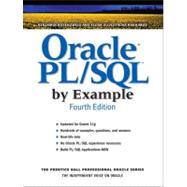Author Biography
Benjamin Rosenzweig is a software development manager at Misys Treasury & Capital Markets, where he has worked since 2002. Prior to that he was a principal consultant for more than three years at Oracle Corporation in the Custom Development Department. His computer experience ranges from creating an electronic Tibetan—English dictionary in Kathmandu, Nepal, to supporting presentation centers at Goldman Sachs and managing a trading system at TIAA-CREF. Rosenzweig has been an instructor at the Columbia University Computer Technology and Application program in New York City since 1998. In 2002 he was awarded the Outstanding Teaching Award from the chair and director of the CTA program. He holds a B.A. from Reed College and a certificate in database development and design from Columbia University. His previous books with Prentice Hall are Oracle Forms Developer: The Complete Video Course (ISBN: 0-13-032124-9) and Oracle Web Application Programming for PL/SQL Developers (ISBN: 0-13-047731-1).
Elena Silvestrova Rakhimov has more than 15 years of experience in database development in a wide spectrum of enterprise and business environments, ranging from nonprofit organizations to Wall Street. She currently works at Alea Software, where she serves as Senior Developer and Team Lead. Her determination to stay hands-on notwithstanding, Rakhimov has managed to excel in the academic arena, having taught relational database programming at Columbia University’s highly esteemed Computer Technology and Applications program. She was educated in database analysis and design at Columbia University and in applied mathematics at Baku State University in Azerbaijan. She currently resides in Vancouver, Canada.
Table of Contents
| Acknowledgments | |
| About the Authors | |
| Introduction | |
| PL/SQL Concepts | |
| PL/SQL in Client-Server Architecture | |
| Use PL/SQL Anonymous Blocks | |
| Understand How PL/SQL Gets Executed | |
| PL/SQL in SQL*Plus | |
| Use Substitution Variables | |
| Use the DBMS_OUTPUT.PUT_LINE Statement | |
| Table of Contents provided by Publisher. All Rights Reserved. |
Supplemental Materials
The New copy of this book will include any supplemental materials advertised. Please check the title of the book to determine if it should include any access cards, study guides, lab manuals, CDs, etc.
The Used, Rental and eBook copies of this book are not guaranteed to include any supplemental materials. Typically, only the book itself is included. This is true even if the title states it includes any access cards, study guides, lab manuals, CDs, etc.









